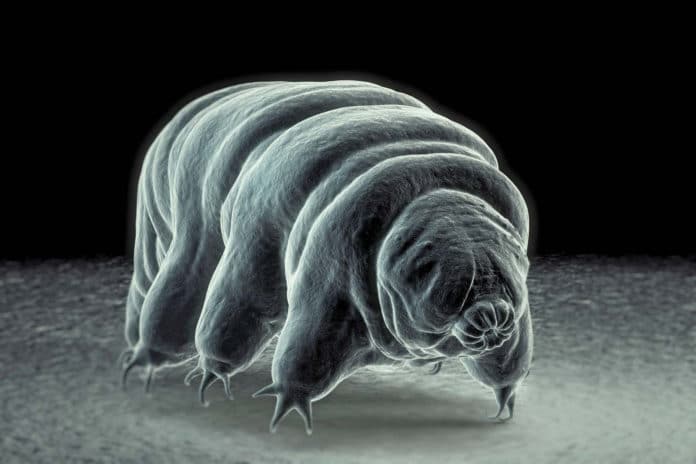Tardigrades, also known as water bears, are known for their appearance and ability to survive in extreme environments. Tardigrades are short (0.05mm – 1.2mm in body length), plump, bilaterally symmetrical, segmented organisms. They have four pairs of legs, each of which ends in four to eight claws.
Animals similar to the tardigrade’s size can not walk. Yet the water bear uses eight stubby legs to improbably propel itself through marine and freshwater sediment, across desert dunes, and beneath the soil.
Their dumpy plod, however, raises the question of why tardigrades evolved to walk at all. A new study by Rockefeller University found the answer.
Scientists analyze tardigrade gaits. They found that the tardigrades walk similar to insects 500,000 times their size. The discovery implies the existence of either a common ancestor or an evolutionary advantage that explains why one of the smallest and squishiest creatures evolved to walk just like larger, hard-bodied insects.
Jasmine Nirody, a fellow in Rockefeller’s Center for Studies in Physics and Biology, said, “Tardigrades have a robust and clear way of moving—they’re not these clumsy things stumbling around in the desert or leaf litter. The similarities between their locomotive strategy and that of much larger insects and arthropods open up several very interesting evolutionary questions.”
Scientists observed the walking of tardigrades under a microscope. They observed a wide range of behavior. Sometimes they would be chill and want to stroll around the substrate. Other times, they’d see something they like and run towards it.
Scientists found that water bears lumber about half a body length per second.
Jasmine Nirody, a fellow in Rockefeller’s Center for Studies in Physics and Biology, said, “At full throttle, their loping strides carried them two body lengths in the same amount of time. We were surprised when we observed how a water bear’s feet contact the ground as it gains momentum. Unlike vertebrates, which have distinct gaits for each speed—picture a horse’s hooves as it transitions from a walk to a gallop—tardigrades run more like insects, scurrying at increasing speeds without ever changing their basic stepping patterns.”
“When vertebrates switch from walking to running, there is a discontinuity. With arthropods, all stepping patterns exist along the same continuum.”
Tardigrades share a locomotive strategy with much larger, hard-bodied insects. But why? One possible explanation is that tardigrades, long assumed to fit neatly into no existing taxonomy, may share common ancestors—and even a common neural circuit— with insects such as fruit flies, ants, and other segmented scurrying creatures. Another possibility is that there is no ancestral connection between tardigrades and arthropods. The unrelated organisms independently arrived at the same walking and running strategies because they were evolutionarily advantageous.
Nirody said, “I’m equally fascinated by both possibilities. If some ancestral neural system controls all of panarthropod walking, we have a lot to learn. On the other hand, if arthropods and tardigrades converged upon this strategy independently, then there’s much to be said about what makes this strategy so palatable for species in different environments.”
Besides evolutionary biology, the study could have implications in the burgeoning fields of soft and microscale robotics.
Journal Reference:
- Jasmine A. Nirody et al., Tardigrades exhibit robust interlimb coordination across walking speeds and terrains, Proceedings of the National Academy of Sciences (2021). DOI: 10.1073/pnas.2107289118
